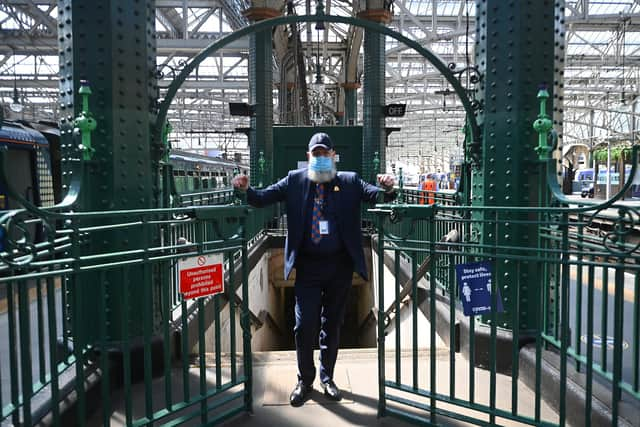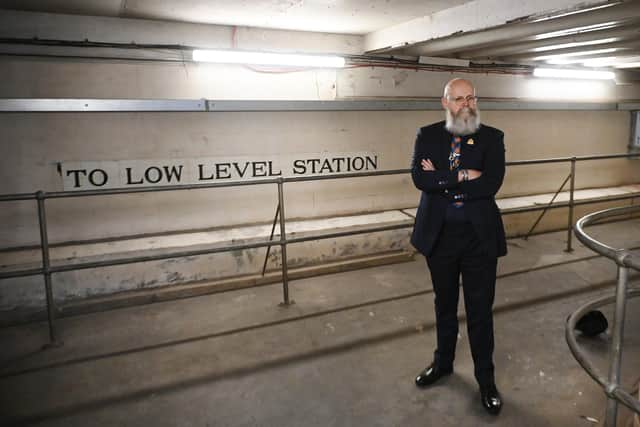Euro 2020: The forgotten ‘football tunnel’ at Glasgow Central used by past generations of Scotland fans en route to Hampden
Members of today’s Tartan Army heading for the crunch Euro 2020 clash with Croatia will be familiar with the queuing system on the main concourse of Scotland’s busiest station - a network of barriers which funnel them onto services to the national stadium on Glasgow’s south side.
However, previous generations of Scotland fans would have had to enter the station from the opposite end of the complex, near the current low-level station, and be directed along a passageway known as the “football tunnel”, which ran at right angles under the platforms.
Advertisement
Hide AdAdvertisement
Hide AdStaircases along the tunnel which emerged midway along the platforms provided direct access to special trains.


The system left the station concourse clear for use by opposing fans – such as England’s – who would be sent from there onto their own dedicated trains to Hampden from other platforms.
Glasgow Central tour guide and historian Paul Lyons today gave The Scotsman an exclusive tour of the tunnel today, which he said had lain unused for several decades.
He pointed out the original wooden railings on the stairways, installed when the station opened 142 years ago.
Mr Lyons said: "They are so well preserved because they haven’t been used for many years.


“The ‘football tunnel’ was used to segregate the crowds when Hampden saw attendances of 100,000.
"Scotland fans came in via Hope Street [on the west side of the station], while England fans came in from Gordon Street [the main entrance, on the north side].
"It kept the supporters completely separate – never the twain shall meet.
Advertisement
Hide AdAdvertisement
Hide Ad"The system will have been at its height between the 1920s and 1950s, when the working class travelled en masse to matches at Hampden by train.
"For older people, the passageway is still known as the ‘football tunnel’.”
One Scotland fan remembered it in the 1980s: “I know I did use it, but to be honest I was so drunk (England match) I never paid any attention.”
The book Glasgow Central, Central to Glasgow, published in 2006 to mark the centenary of the station’s expansion, noted that ticket offices at each end of the "Hielanman’s Umbrella” – where Argyle Street passes under the station – were “linked together and to the low-level station by various passageways and by individual staircases to most high-level platforms”.
John Paton, one of its contributors, wrote: “The extensive network of underground passageways leading down to Argyle Street and the low-level station, significantly curtailed and altered today, had an atmosphere quite different from the station above.
"Curved like the buildings upstairs, they were however gloomily lit and were lined in off-white and green glazed tiling.
"Outwith rush hours, they, like the low-level station itself, seemed eerily quiet.”
The tunnel has featured in some past tours of the station, which are currently suspended because of the Covid crisis.
Advertisement
Hide AdAdvertisement
Hide AdMr Lyons said the tiles had been covered over and the passageway ceiling lowered to provide space for cabling.
The tours cover various subterranean areas of the station, including a former temporary morgue used during the First World War and a derelict platform abandoned for 57 years.
A message from the Editor:
Thank you for reading this article. We're more reliant on your support than ever as the shift in consumer habits brought about by coronavirus impacts our advertisers.
If you haven't already, please consider supporting our trusted, fact-checked journalism by taking out a digital subscription.
Comments
Want to join the conversation? Please or to comment on this article.
